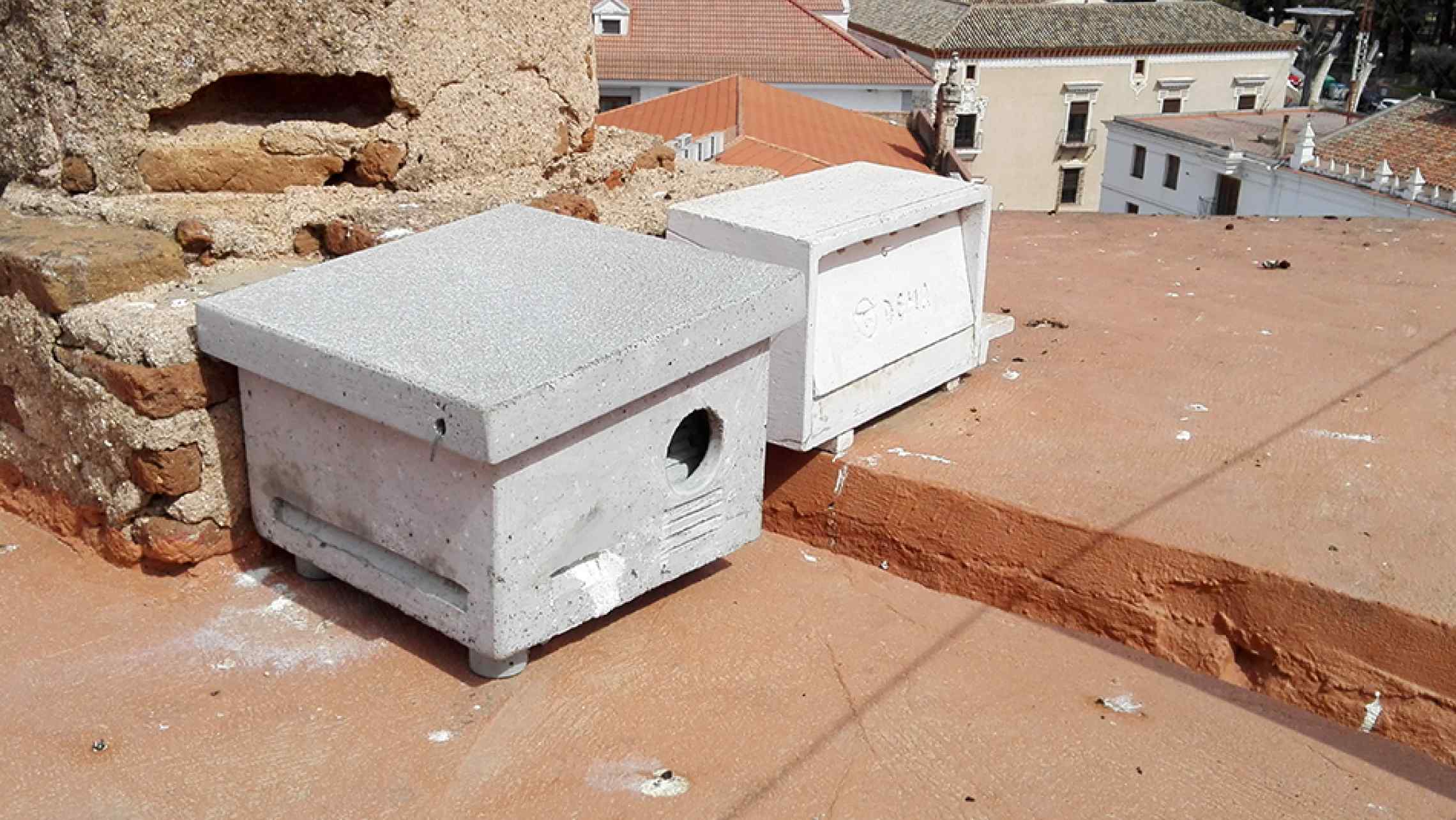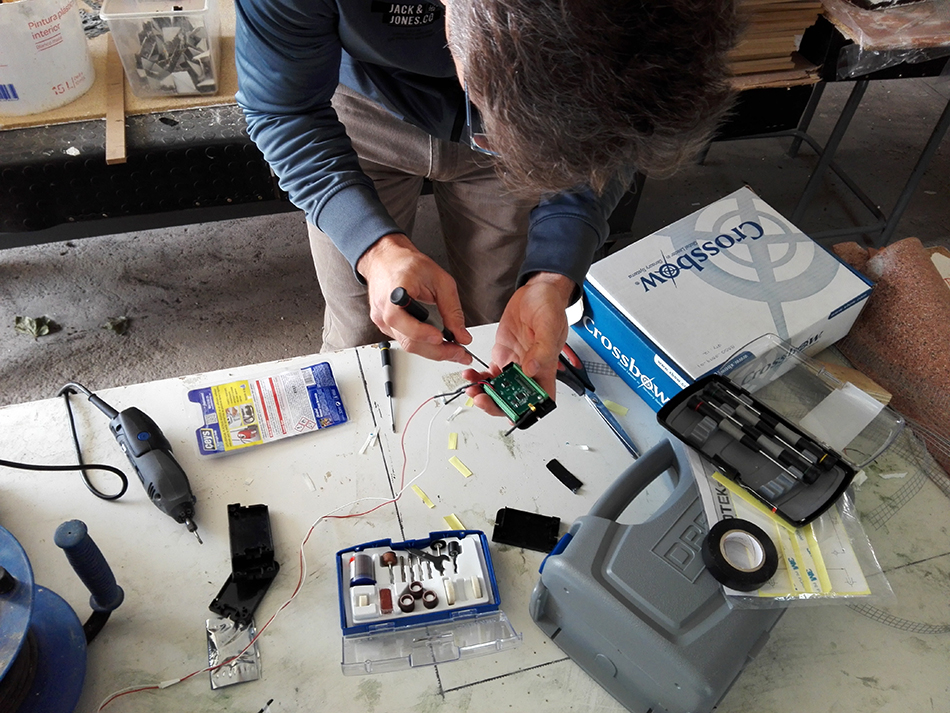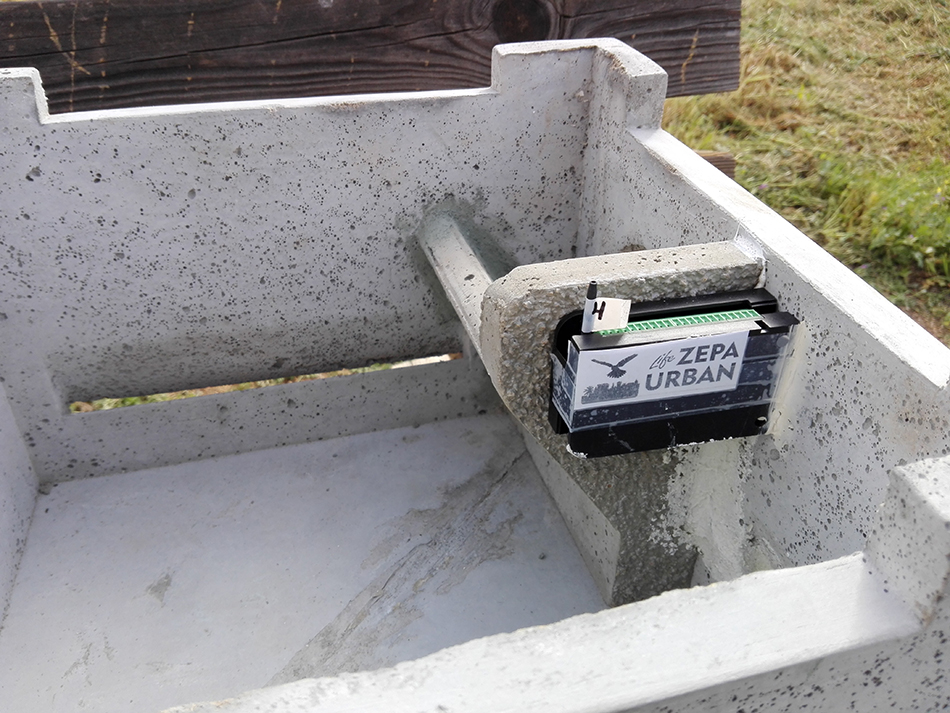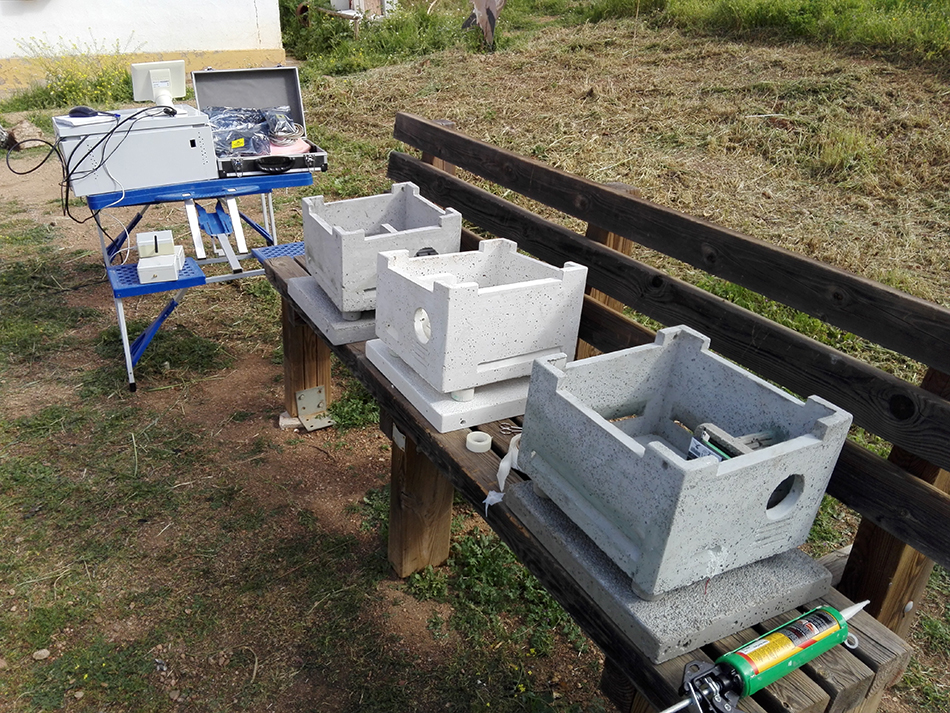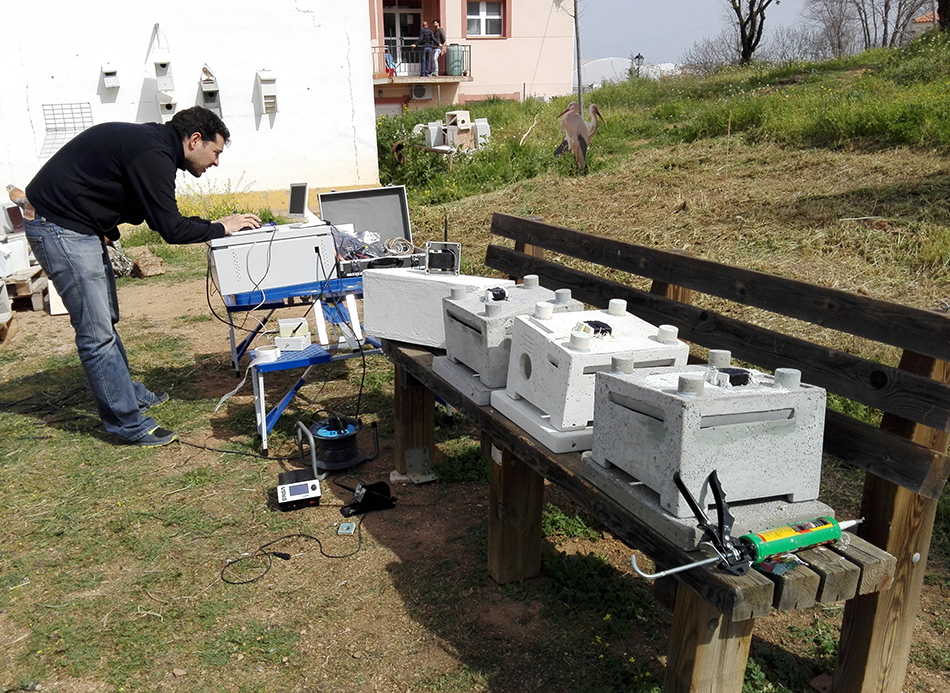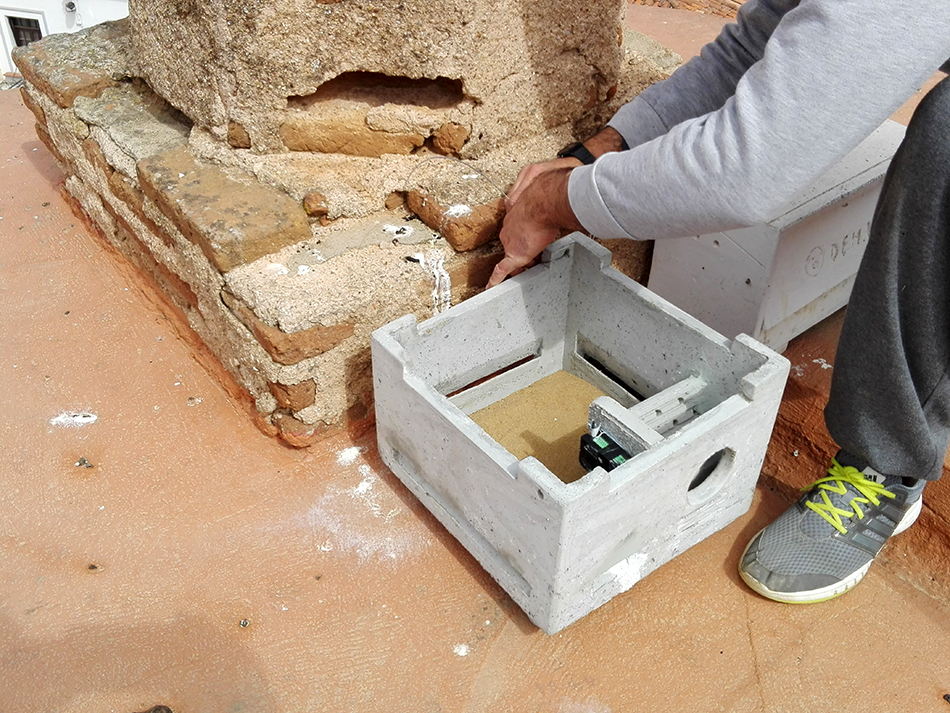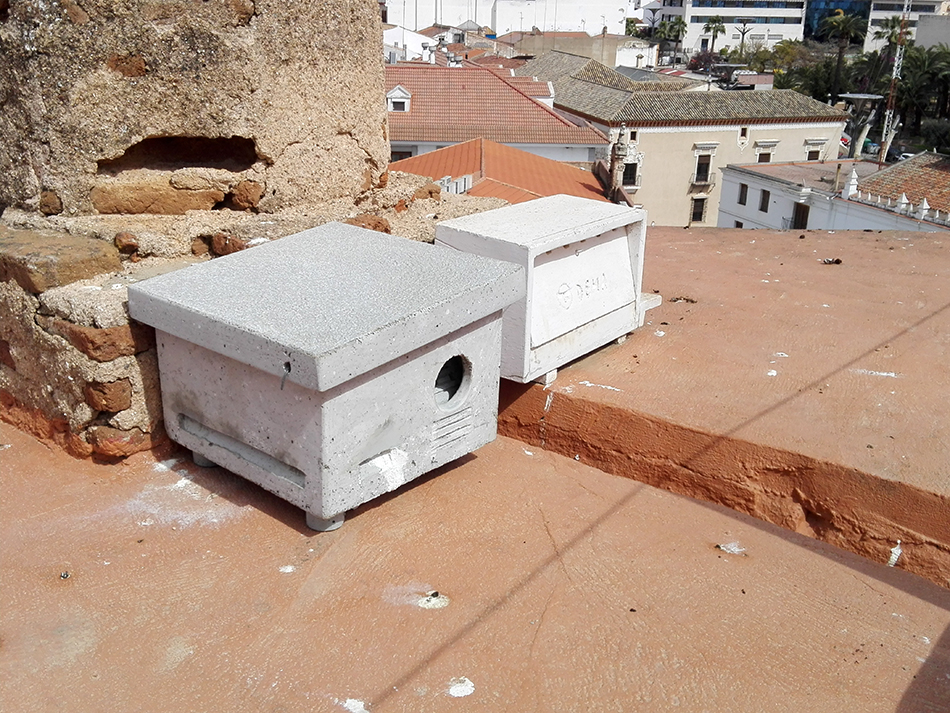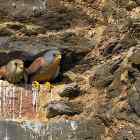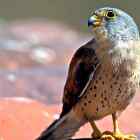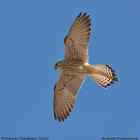One of the key actions of the LIFE-ZEPAURBAN project is action A6, the industrial manufacture of mortar-cork nest boxes for the lesser kestrel. The main objective is to test the efficiency of a new design and materials for the construction of nest boxes for this species with improved technical and ethological conditions that allow the improving of its breeding success.
As a result of working very hard since September 2016, a new nest box has been developed with the involvement of the following partners:
- DEMA, providing its experience in the designing of safe nest boxes that are ethologically adapted to the lesser kestrel
- Prefabricados Extremadura 2002, ensuring that the new nest boxes are suitable for industrial manufacture
- INTROMAC, responsible for testing the materials to be used and their dosage
- The State Office for the Environment as coordinator of the LIFE project, providing its experience in the developing of conversation measures for the lesser kestrel.
Once the new nest box had been designed it needed to be tested. In order to do so, in the installations of INTROMAC its behaviour was assessed by freezing-thawing and thermal shock cycle tests and it was compared with the traditional nest box of lime mortar. On the other hand, for an ethological assessment and to test temperature and humidity a preference test had to be carried out in an urban ZEPA. On 17th March between 12:00 and 14:00 h (the best time to minimise disturbance to the colony) the new nest boxes were installed under the eaves of the roof of the Church of La Purificación of Almendralejo (ZEPA ES0000331 Colonies of Lesser Kestrel in Almendralejo). Although they are away from the edge of the eaves, the nest boxes were secured to the wall with wire for improved security.
A particle type sensor for temperature and humidity has been installed in each nest box. The sensors have been placed inside the nest boxes and by means of a wi-fi signal they communicate with a PC installed below the roof of the Church of La Purificación. These cordless independent sensors allow the continuous recording of the temperature and humidity of each nesting box.
The new nesting boxes have been installed near nests occupied in previous years to check whether nearby pairs change to the new models or prefer the old ones. The complex development of the new nest boxes led to their being installed after the date initially anticipated, this means as that pairs have already occupied nest boxes they may be less acceptable. The nest boxes are however being supervised so as to assess their acceptance and effectiveness.
